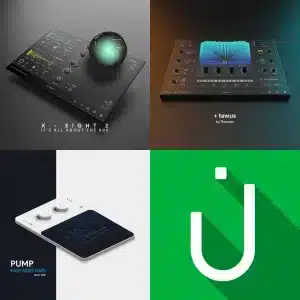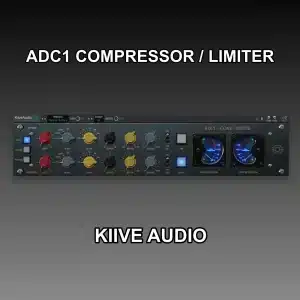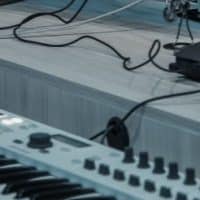5 Reasons You Should Mix With Only Stock Plugins There are many great third party plugins available for every effect you can imagine, but many DAWs have some terrific options bundled with them. In this post I am going to give you 5 reasons how mixing exclusively with stock plugins…

5 Techniques For A More Polished Mix
1. TRUST YOUR EARS
This may be perhaps the most overused and non-specific bit of advice I see tossed around in online audio forums and groups, so why I am leading off with it here? The fact is it can be good advice, but it needs some context. Allow me to explain:
In the absence of well-developed critical listening skills, relying exclusively on your ears without any outside feedback may prove to be an exercise in futility. That is why I am a strong supporter of using reference mixes and analyzers while mixing, even for experienced producers.
The second problem with the advice is that it also assumes an ideal listening with a treated room, high quality, well-placed monitors and accurate converters. Even producers with the most trained ears will have difficulty being able to trust their judgement in poor listening conditions. This is why it can be a good idea to check mixes on multiple systems, including headphones and car stereos.
So, with the caveat that you:
a) Have developed at least decent critical listening skills.
And
b) Are working with a quality playback system in a good room.
Or
c) Are at least aware of the limitations of said system and have a strategy to compensate for its limitations.
Then, my recommendation is to trust your ears when making key mix decisions rather than rely on meters and faders to tell you what is good. Obviously, meters are a useful tool which is why I advocate them in the first place but they should be used as a supplementary tool and a measuring stick rather than a substitution for listening. So the next time you are deep in a mix, try looking away from the screen every once in a while, look at your speakers, the walls, anything other than the screen and try to take in and consider what you are hearing.
2. CREATE NUANCE WITH DYNAMICS
Once you’ve got a well-balanced mix with good separation, don’t stop there. One thing that separates a good mix from a great one is in the subtle and skillful use of dynamics. Music is all about change and nuance and a mix isn’t any different. Automation is one of the most obvious ways to finesse a mix and is certainly a very useful tool, but before that I tend to reach for clip gain (level changes applied on the region level rather than the track level) to create dynamics.
Start with very minor dips in volume on any elements that repeat longer than 8 bars or when new elements are introduced. Another great technique is very minor EQ changes over time. It is not uncommon for me to insert a secondary EQ on a channel targeting a specific frequency and automate it so that it is only active for a specific section of a song. This might coincide with a part of the arrangement that is very dense and needs some additional shaping to make room for all the elements. Alternatively you can use a dynamic EQ plugin to target frequencies that are only periodically peaky rather than constantly so.
These are just a couple of examples to get your imagination going, experiment with other effects like filters, modulation and time based effects changing slightly over time to inject some change in your next mix.
3. EDIT FIRST, MIX SECOND
This is always a big subject of discussion between me and clients. Unless you have no time or budget limitations, I suggest always keeping the edit and mix processes separate. Depending on the project you could even break it down further to:
Guitars & Bass Editing
Drum Editing & Replacement
Vocal Comping
Vocal Tuning
Mix
Early on in my career I made the mistake of taking on projects that required extensive editing, sometimes many days worth and not taking that into consideration when negotiating rates with clients. The biggest issue though, is that if you don’t keep the edit and mix process separate you may end up killing your creativity flow by having to constantly stop in the middle of a mix to work on something that should have been addressed in an earlier process.
4. PRACTICE GOOD EQ HABITS
A few general guidelines I always suggest to put to use when using EQ.
1) If you are boosting a frequency, do so with a wider Q (bandwidth) to avoid a peaky effect. I also tend to reach for analog style EQ plugins rather than digital, surgical type EQs when making boosts.
2) In busier mixes be sure that you are cutting out frequencies in tracks that don’t represent the characteristic sound of the instrument. A lot of instruments and sources may have a very wide frequency range but often it is the case that only a narrow range of frequencies are responsible for the characteristic sound of the instrument.
For instruments that aren’t extremely low or extremely high, it can be a good idea to start with a high pass or low pass filter to cut out frequencies on either extreme that aren’t contributing significantly to the timbre and perhaps equally importantly may be helping to mask other instruments which do have their fundamental frequencies in that range.
5. SLEEP ON IT
Sometimes after a long day of mixing you may find yourself just a tweak away from that perfect mix as the day is winding down. My suggestion in these situations is to save, shut down and go home. Come back the next day with fresh ears and you may be surprised at the difference in perspective you have upon revisiting your mix!







